 W
WCamp Harmony is the unofficial euphemistic name of the Puyallup Assembly Center, a temporary facility within the system of internment camps set up for Japanese Americans during World War II. Approximately 7,390 Americans of Japanese descent from Western Washington and Alaska were sent to the camp before being transferred to the War Relocation Authority camps at Minidoka, Idaho, Tule Lake, California and Heart Mountain, Wyoming.
 W
WCamp Kohler was located in the northeast corner of unincorporated Sacramento County, California, United States, until it was destroyed by a fire in 1947. Initially a camp for migrant farm workers, it became the Sacramento Assembly Center a temporary detention center for interned Japanese Americans in 1942. The site is one of 12 California assembly centers that share designation as California Historical Landmark No. 934. From 1943 to 1945 the camp was a training center for US World War II forces.
 W
WCamp Tulelake was a federal work facility and War Relocation Authority isolation center located in Siskiyou County, five miles west of Tulelake, California. It was established by the United States government in 1935 during the Great Depression for vocational training and work relief for young men, in a program known as the Civilian Conservation Corps. The camp was established initially for CCC enrollees to work on the Klamath Reclamation Project.
 W
WCrystal City Internment Camp, located near Crystal City, Texas, was a place of confinement for people of Japanese, German, and Italian descent during World War II, and has been variously described as a detention facility or a concentration camp. The camp, which was originally designed to hold 3,500 people, opened in December 1943 and was officially closed on February 11, 1948.
 W
WDesha County is a county located in the southeast part of the U.S. state of Arkansas, with its eastern border the Mississippi River. As of the 2010 census, the population was 13,008. It ranks 56th of Arkansas's 75 counties in terms of population. The county seat is Arkansas City. Located in the Arkansas Delta, Desha County's rivers and fertile soils became prosperous for planters under the cotton-based economy of plantation agriculture in the antebellum years and late 19th century. Still largely rural, it has suffered population losses and economic decline since the mid-20th century.
 W
WFort Missoula was established by the United States Army in 1877 on land that is now part of the city of Missoula, Montana, to protect settlers in Western Montana from possible threats from the Native American Indians, such as the Nez Perce.
 W
WFort Missoula Internment Camp was an internment camp operated by the United States Department of Justice during World War II. Japanese Americans and Italian Americans were imprisoned here during this war.
 W
WThe Big Fresno Fair, founded in 1884, is the fifth-largest fair in the State of California. The Big Fresno Fair represents the 21st District Agricultural Association, an entity of the California Department of Food and Agriculture Division of Fairs & Expositions. It is the largest annual event in the San Joaquin Valley, attracting more than 600,000 people each October during its two-week run featuring exhibits, a livestock show, live horse racing, musical entertainment, educational programs and more. The Fair provides a link between urban and rural California, serving as a tool to educate visitors on the region's rich agricultural industry. The mission of The Big Fresno Fair is to "Educate, Celebrate and Have Fun."
 W
WThe Gila River War Relocation Center was an American concentration camp in Arizona, one of several built by the War Relocation Authority (WRA) during the Second World War for the incarceration of Japanese Americans from the West Coast. It was located within the Gila River Indian Reservation near the town of Sacaton, about 30 mi (48.3 km) southeast of Phoenix. With a peak population of 13,348, it became the fourth-largest city in the state, operating from May 1942 to November 16, 1945.
 W
WThe Granada War Relocation Center, also known as Camp Amache, was a Japanese American concentration camp located in southeast Colorado, about a mile west of the small farming community of Granada, south of US 50.
 W
WThe Heart Mountain War Relocation Center, named after nearby Heart Mountain and located midway between the towns of Cody and Powell in northwest Wyoming, was one of ten concentration camps used for the internment of Japanese Americans evicted from the West Coast Exclusion Zone during World War II by executive order from President Franklin Roosevelt after the bombing of Pearl Harbor in December 1941, upon the recommendation of Lieutenant General John L. DeWitt.
 W
WHonouliuli National Historic Site is near Waipahu on the island of Oahu, in the U.S. state of Hawaii. This is the site of the Honouliuli Internment Camp which was Hawaiʻi's largest and longest-operating internment camp, opened in 1943 and closed in 1946. It was designated a National monument on February 24, 2015, by President Barack Obama. The John D. Dingell, Jr. Conservation, Management, and Recreation Act, signed March 12, 2019, redesignated it as Honouliui National Historic Site. The internment camp held 320 internees and also became the largest prisoner of war camp in Hawaiʻi with nearly 4,000 individuals being held. Of the seventeen sites that were associated with the history of internment in Hawaiʻi during World War II, the camp was the only one built specifically for prolonged detention. As of 2015, the new national monument is without formal services and programs.
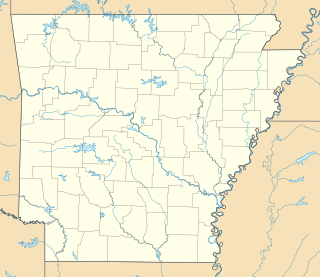 W
WThe Jerome War Relocation Center was a Japanese American internment camp located in southeastern Arkansas, near the town of Jerome in the Arkansas Delta. Open from October 6, 1942, until June 30, 1944, it was the last American concentration camp to open and the first to close. At one point it held as many as 8,497 detainees. After closing, it was converted into a holding camp for German prisoners of war. Today, few remains of the camp are visible, as the wooden buildings were taken down. The smokestack from the hospital incinerator still stands.
 W
WKīlauea Military Camp (KMC) is operated as a Morale, Welfare and Recreation (MWR) facility on Hawai‘i Island, also known as the Big Island, in Hawaiʻi. It is located inside Hawaiʻi Volcanoes National Park. This United States Department of Defense (DOD) facility is at an elevation of 4,000 feet, within walking distance from Kilauea Volcano, the world’s most active volcano.
 W
WThe Kooskia Internment Camp is a former internment camp in the northwest United States, located in north central Idaho, about thirty miles (50 km) northeast of Kooskia in northern Idaho County. It operated during the final two years of World War II.
 W
WLeupp is a census-designated place (CDP) in Coconino County, Arizona, on the Navajo Nation, United States. The population was 951 at the 2010 census.
 W
WManzanar is the site of one of ten American concentration camps, where more than 120,000 Japanese Americans were incarcerated during World War II from March 1942 to November 1945. It is located at the foot of the Sierra Nevada mountains in California's Owens Valley, between the towns of Lone Pine to the south and Independence to the north, approximately 230 miles (370 km) north of Los Angeles. Manzanar means "apple orchard" in Spanish. The Manzanar National Historic Site, which preserves and interprets the legacy of Japanese American incarceration in the United States, was identified by the United States National Park Service as the best-preserved of the ten former camp sites.
 W
WMinidoka National Historic Site is a National Historic Site in the western United States. It commemorates the more than 9,000 Japanese Americans who were imprisoned at the Minidoka War Relocation Center during the Second World War.
 W
WThe Temporary Detention Camp for Japanese Americans / Pomona Assembly Center is one of the places Japanese Americans were held during World War II. The Pomona Assembly Center was designated a California Historic Landmark on May 13, 1980. The Pomona Assembly Center is located in what is now called the Fairplex in Pomona, California in Los Angeles County. The Pomona Assembly Center was called Los Angeles County Fairgrounds in 1942.
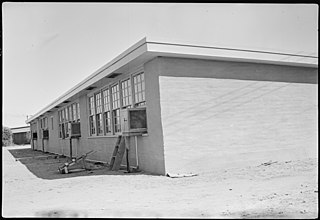 W
WThe Poston Elementary School, Unit 1, Colorado River Relocation Center is a historic complex of school buildings in Poston, Arizona. This nationally significant complex was built in the 1940s on the grounds of the Poston War Relocation Center, a Japanese-American internment camp operated by the Office of Indian Affairs of the United States government during World War II. The complex is the only surviving school built in one of the ten camps, and it was designed and built by Japanese-American internees living at the camp. It was designated a National Historic Landmark District in 2012.
 W
WThe Poston Internment Camp, located in Yuma County in southwestern Arizona, was the largest of the ten American concentration camps operated by the War Relocation Authority during World War II.
 W
WThe Rohwer War Relocation Center was a World War II Japanese American concentration camp located in rural southeastern Arkansas, in Desha County. It was in operation from September 18, 1942, until November 30, 1945, and held as many as 8,475 Japanese Americans forcibly evacuated from California. The Rohwer War Relocation Center Cemetery is located here, and was declared a National Historic Landmark in 1992.
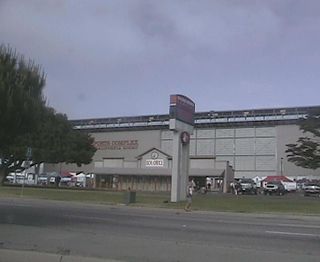 W
WThe Salinas Sports Complex is a sporting complex located in Salinas, California on the Central Coast. The main feature of the complex is a 17,000-seat stadium for California Rodeo Salinas. Soccer, football, and rugby was also played at the main stadium before the opening of Rabobank Stadium next door.
 W
WThe Temporary Detention Camp for Japanese Americans / Santa Anita Assembly Center is one of the places Japanese Americans were held during World War II. The Santa Anita Assembly Center was designated a California Historic Landmark (No.934.07) on May 13, 1980. The Santa Anita Assembly Center is located in what is now the Santa Anita Racetrack in Arcadia, California in Los Angeles County.
 W
WSanta Anita Park is a Thoroughbred racetrack in Arcadia, California, United States. It offers some of the prominent horse racing events in the United States during early fall, winter and in spring. The track is home to numerous prestigious races including both the Santa Anita Derby and the Santa Anita Handicap as well as hosting the Breeders' Cup in 1986, 1993, 2003, 2008, 2009, 2012, 2013, 2014, 2016 and 2019. Since 2011, The Stronach Group are the current owners.
 W
WSeagoville is a city in Dallas County, Texas, United States, and a suburb of Dallas. A small portion of Seagoville extends into Kaufman County. The population was 14,835 at the 2010 census. The city is located along U.S. Highway 175, 10 miles (16 km) from downtown Mesquite.
 W
WThe Shops at Tanforan is a regional shopping mall in San Bruno, California, United States. It is located on the San Francisco Peninsula, 10 miles (16 km) south of San Francisco city limits. It is served by the adjacent San Bruno Bay Area Rapid Transit (BART) station, as well as several local SamTrans bus lines and the Brisbane Shuttle. The complex is located minutes away from San Francisco International Airport.
 W
WTanforan Racetrack was a thoroughbred horse racing facility in San Bruno, on the San Francisco Peninsula, in California. It was in operation from September 4, 1899, to 1964. The horse racing track and buildings were constructed to serve a clientele from nearby San Francisco.
 W
WThe Topaz War Relocation Center, also known as the Central Utah Relocation Center (Topaz) and briefly as the Abraham Relocation Center, was an American concentration camp which housed Americans of Japanese descent and immigrants who had come to the United States from Japan, called Nikkei. President Franklin Roosevelt signed Executive Order 9066 in February 1942, ordering people of Japanese ancestry to be incarcerated in what were euphemistically called "relocation centers" like Topaz during World War II. Most of the people incarcerated at Topaz came from the Tanforan Assembly Center and previously lived in the San Francisco Bay Area. The camp was opened in September 1942 and closed in October 1945.
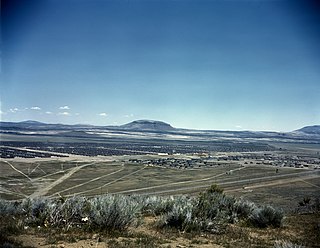 W
WThe Tule Lake National Monument in Modoc and Siskiyou counties in California, consists primarily of the site of the Tule Lake War Relocation Center, one of ten concentration camps constructed in 1942 by the United States government to incarcerate Japanese Americans forcibly removed from their homes on the West Coast. They totaled nearly 120,000 people, more than two-thirds of whom were United States citizens.
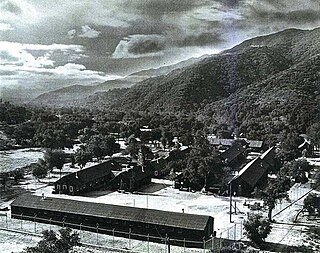 W
WTuna Canyon Detention Station was a temporary detention facility used for holding hundreds of Japanese Americans who were considered enemy aliens by the U.S. government and to be risks to the nation's security. The detention camp was located in Tujunga at a former Civilian Conservation (CCC) Camp, constructed in 1933. The camp was converted into the Tuna Canyon Detention Station just after the bombing of Pearl Harbor. Administered by the Department of Justice, it opened on December 16, 1941, when the first group of detainees arrived from various Southern California towns and cities. Tuna Canyon had a capacity of 300, and until its closing in October 31, 1943, over 2,000 Japanese, German, and Italian immigrants, Japanese Peruvians, and others were imprisoned there. Most were transferred to other DOJ facilities like Fort Missoula, Fort Lincoln and Santa Fe. The site was used as a probation school after the war.